
漢德百科全書 | 汉德百科全书
 International cities
International cities
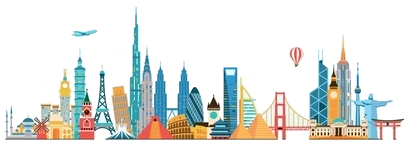

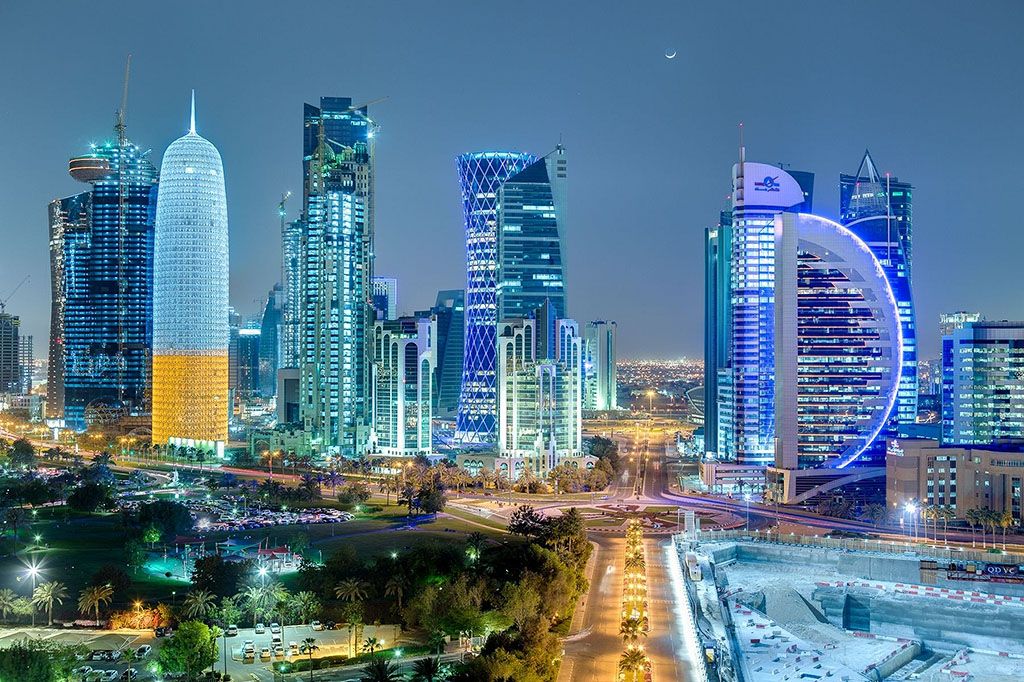
Doha (arabisch الدوحة ad-Dauha, DMG ad-Dauḥa, im Dialekt ad-Dōha für „Die Bucht“) ist die Hauptstadt von Katar und liegt am Persischen Golf. Die Einwohnerzahl lag im April 2015 bei 587.055.[1] In der Agglomeration Dohas leben (Stand April 2015) 956.457 Menschen.[2] Doha wächst mit der nur neun Kilometer entfernten Stadt Ar-Rayyan schnell zusammen. Die Stadt beherbergt den Hamad International Airport, wichtige Teile der Öl- und Fischereiindustrie sowie mit der „Education City“ ein Gebiet für Forschung und Bildung.
多哈(阿拉伯语:الدوحة ad-Dūḥa)位于波斯湾畔的著名港口,是卡塔尔的首都,卡塔尔8个区之一。多哈是卡塔尔的第一大城市以及全国经济、交通和文化中心,2009年时,人口为998,651人,约占全国人口的60%。
第十五届亚洲运动会于2006年12月1日至15日在卡塔尔首都多哈进行,这可能是亚运会有史以来规模最大的一届。2011年12月,多哈举办第20届世界石油理事会,同年的12月,2011年泛阿拉伯运动会也于多哈举行。在2012年,多哈举办了第十八次联合国气候变化大会。在2022年,多哈将会举办2022年世界杯足球赛。
ドーハ(英語:Doha、アラビア語:الدوحة al-Dawha)は、カタールの首都。カタール半島東海岸のペルシア湾に面した港町で、同国最大の都市。また、同国を構成する基礎自治体のひとつである。中東有数の世界都市でもある。人口は1,312,947人(2013年)で、カタールの人口の60%がドーハ都市圏に住んでいる。
Doha (Arabic: الدوحة, ad-Dawḥa or ad-Dōḥa, pronounced [adˈdawħa]) is the capital and most populous city of the State of Qatar. Doha has a population of 1,351,000 in the city proper with the population close to 1.5 million.[1] The city is located on the coast of the Persian Gulf in the east of the country. It is Qatar's fastest growing city, with over 50% of the nation's population living in Doha or its surrounding suburbs, and it is also the economic centre of the country.
Doha was founded in the 1820s as an offshoot of Al Bidda. It was officially declared as the country's capital in 1971, when Qatar gained independence from being a British Protectorate.[2] As the commercial capital of Qatar and one of the emergent financial centres in the Middle East, Doha is considered a world city by the Globalization and World Cities Research Network. Doha accommodates Education City, an area devoted to research and education.
The city was host to the first ministerial-level meeting of the Doha Development Round of World Trade Organization negotiations. It was also selected as host city of a number of sporting events, including the 2006 Asian Games, the 2011 Pan Arab Games and most of the games at the 2011 AFC Asian Cup. In December 2011, the World Petroleum Council held the 20th World Petroleum Conference in Doha.[3] Additionally, the city hosted the 2012 UNFCCC Climate Negotiations and is set to host a large number of the venues for the 2022 FIFA World Cup.[4]
In May 2015, Doha was officially recognized as one of the New7Wonders Cities together with Vigan, La Paz, Durban, Havana, Beirut and Kuala Lumpur.[5]
Doha (en arabe : الدوحة, ad-Dawha ou ad-Doha, littéralement « le grand arbre » ou « l'arbre collant ») est la capitale du Qatar. Située sur le golfe Persique, avec une corniche de 7 km, elle a en avril 2010 une population de 796 947 habitants1. Doha est la plus grande ville du Qatar, abritant avec sa proche banlieue plus de 80 % de la population du pays. Elle est en croissance rapide et est maintenant juxtaposée à la ville d'Al Rayyan (455 623 hab. en avril 2010)1 située à 9 km à l'intérieur des terres. C'est également le centre économique du pays.
Doha est aussi le siège du gouvernement du Qatar, dirigé par le cheikh Hamad bin Khalifa Al Thani. Doha est le siège de l'Education City, espace consacré à la recherche et l'éducation.
Doha a été le site de la première réunion au niveau ministériel du cycle de Doha pour le développement des négociations de l'Organisation mondiale du commerce.
La ville de Doha a également accueilli les Jeux asiatiques de 2006, le sommet sur le changement climatique du 4 au 8 décembre 2012, la 38e session du Comité du patrimoine mondial de l'UNESCO du 15 au 25 juin 2014.
Doha abritera enfin plusieurs matches de la coupe du monde de football de 2022 organisée par le Qatar.
Doha (الدوحة in arabo, ad-Dawḥa oppure ad-Dōḥa, letteralmente il grande albero) è la capitale e la città più popolata dello stato del Qatar. Si trova sul Golfo Persico e aveva nel 2015 una popolazione di 956.460 abitanti. Doha è la più grande città del Qatar, il 60% della popolazione dello Stato risiede infatti nella città o nell'area suburbana.
A Doha vi è la sede del governo del Qatar, il cui capo è l'emiro Tamim bin Hamad Al Thani. Vicino a Doha sorge Education City, una zona in cui si sono insediati diversi campus universitari e istituti dedicati alla ricerca e all'innovazione.
La città presenta un carattere cosmopolita.[senza fonte] In Qatar è stanziato il principale quartier generale del Comando Centrale Militare USA, il più grande dell'intero medio-oriente.
Doha (en árabe, 'دوحة', Ad-Dawhah; trascripción: Doha, correspondiente a la pronunciación árabe dialectal) es la capital de Catar, país situado en una pequeña península en el golfo Pérsico. Su población estimada es de 1 903 447 habitantes (2012)1 y las principales actividades económicas son la industria del gas y el petróleo. Cerca de Doha se encuentra la Ciudad de la Educación, zona dedicada a la investigación y la educación.
Doha fue en 2001 la sede de la primera reunión a nivel ministerial de la Ronda de Doha, esto es, las negociaciones de la Organización Mundial de Comercio con el propósito de liberalizar el comercio mundial.
La ciudad cuenta con un aeropuerto, el Nuevo Aeropuerto Internacional de Doha.
En la ciudad se encuentra la sede de la cadena de televisión Al-Jazeera, uno de los principales medios de comunicación internacionales en lengua inglesa y árabe. En 2022, será sede de la Copa del Mundo de Fútbol en Catar. El Estadio Nacional de Lusail, el más grande de todos, será la sede de entre otros encuentros, del partido inaugural y la final.
La ciudad fue la sede de los Campeonatos Mundiales de Ciclismo en Ruta de 2016.2
До́ха (араб. الدوحة, Эд-Доха) — столица и крупнейший город арабского государства Катар, расположенный у побережья Персидского залива. Административный центр муниципалитета Эд-Доха.
В мае 2015 года Доха была официально избрана в качестве одного из «Семи новых чудо-городов», наряду с городами Бейрут, Виган, Дурбан, Гавана, Куала-Лумпур и Ла-Пас.
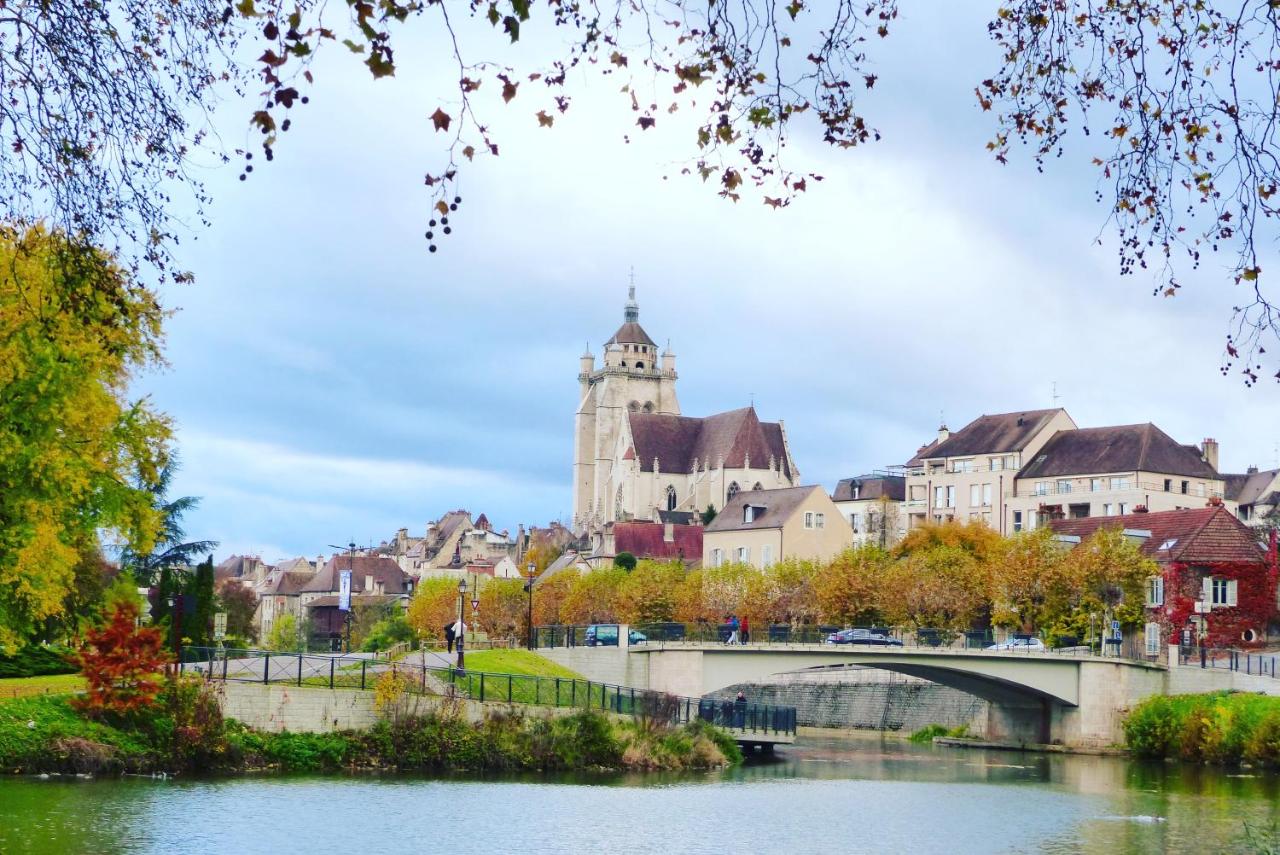


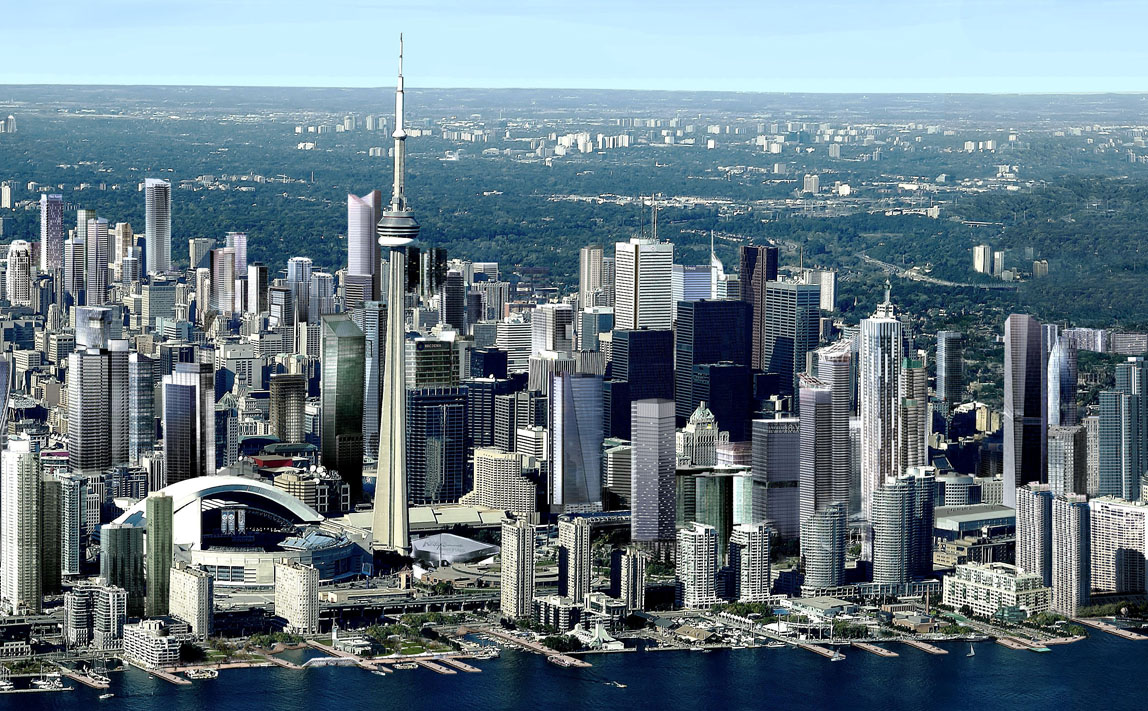
Toronto (englische Aussprache [təˈɹɒn(t)oʊ̯]; regional auch  [təˈɹɒnə] oder [ˈtɹɒnoʊ̯]) ist mit 2,6 Millionen Einwohnern[2] die größte Stadt Kanadas und die Hauptstadt der Provinz Ontario. Sie liegt im Golden Horseshoe (Goldenes Hufeisen), einer Region mit über 8,1 Millionen Einwohnern, die sich halbkreisförmig um das westliche Ende des Ontariosees bis zu den Niagarafällen erstreckt. Rund ein Drittel der Bevölkerungszunahme des ganzen Landes lebte in den letzten Jahren in diesem Großraum. Die Einwohnerzahl der Metropolregion (Census Metropolitan Area) stieg von 4,1 Millionen im Jahr 1992 auf 5,6 Millionen im Jahr 2011.[3] Die Greater Toronto Area hatte 2010 über 6,2 Millionen Einwohner.[4]
[təˈɹɒnə] oder [ˈtɹɒnoʊ̯]) ist mit 2,6 Millionen Einwohnern[2] die größte Stadt Kanadas und die Hauptstadt der Provinz Ontario. Sie liegt im Golden Horseshoe (Goldenes Hufeisen), einer Region mit über 8,1 Millionen Einwohnern, die sich halbkreisförmig um das westliche Ende des Ontariosees bis zu den Niagarafällen erstreckt. Rund ein Drittel der Bevölkerungszunahme des ganzen Landes lebte in den letzten Jahren in diesem Großraum. Die Einwohnerzahl der Metropolregion (Census Metropolitan Area) stieg von 4,1 Millionen im Jahr 1992 auf 5,6 Millionen im Jahr 2011.[3] Die Greater Toronto Area hatte 2010 über 6,2 Millionen Einwohner.[4]
Die Stadt liegt am nordwestlichen Ufer des Ontariosees, dem mit 18.960 km² Fläche[5] kleinsten der fünf Großen Seen. Durch die Eingemeindung einer Reihe von Vorstädten, die bereits mit Toronto verschmolzen waren (Etobicoke, Scarborough, York, East York und North York), wurde Toronto Ende der 1990er Jahre mehrfach vergrößert. Das Zentrum mit dem Einkaufs- und Bankendistrikt befindet sich in der Nähe des Sees. Die Haupteinkaufsstraße ist die Yonge Street. Toronto ist seit ungefähr den 1970er Jahren, nachdem Montreal über Jahrzehnte hinweg diese Rolle zugefallen war, Kanadas Wirtschaftszentrum und weltweit einer der führenden Finanzplätze.
多伦多(英语/法语:Toronto),是北美洲国家加拿大安大略省首府,加拿大的最大城市。
多伦多坐落在安大略湖西北岸的南安大略地区。根据2012年七月的加拿大人口普查,多伦市人口达2,790,060,为加拿大最大城市。多伦多市是大多伦多地区的心脏地区,也是安大略省南部人口稠密区(称作“金马蹄地区”)的一部分。[1][2][3]城市区有5,132,794名居民。[4]在2011年人口普查中,多伦多人口普查区有5,583,064名居民,而覆盖范围较广的大多伦多地区则有6,054,191名居民。[2]
作为加拿大的经济中心,多伦多是一个世界级城市,[5]也是世界上最大的金融中心之一。[6][7] 多伦多在经济上的领先地位在于金融、商业服务、电信、航太、交通运输、媒体、艺术、电影、电视制作、出版、软件、医药研究、教育、旅游、体育等产业。[8][9]多伦多证券交易所是世界第七大交易所,总部设于市内,有多数加拿大公司在这里上市。
多伦多的国际性人口[10] 体现出它是前往加拿大移民的重要落脚点。[11]而市内49%的人口是在加拿大以外诞生[12],也造就多伦多成为世上种族最多样化的城市之一。目前多伦多的低犯罪率、洁净的环境、高生活水准、以及对多样文化的包容性,令该市被多个经济学智囊团列为世界上最宜居的城市之一。[13][14]另一方面,多伦多于2006年被列为加拿大生活成本最高的城市。[15]
大约1/3的加拿大人居住在距多伦多两小时车程的郊区。加拿大大约1/6的就业机会在该市。
多伦多当地的华侨及华裔人口多达四十万,相当于加拿大全国约百分之一的人口,该城市也是加拿大华人最多的城市。除此之外也有大量世界各地的移民,加拿大安大略省多伦多市的人口统计资料使多伦多成为世界上最多元文化和多种族的城市之一。2016年,该市居民的51.5%属于明显的少数族裔,而2011年这一比例为49.1%,和1981年为13.6%。多伦多还建立了多个社区,例如唐人街,意大利的Corso,小意大利,小印度,希腊城,韩国城,小牙买加,小葡萄牙和朗塞瓦勒,以庆祝该市的多元文化主义的成功。
多伦多[注 1](英语:Toronto)是加拿大安大略省首府,也是加拿大最大的城市,坐落在安大略湖西北岸的南安大略地区。根据2021年的加拿大人口普查,多伦多市人口达2,794,356人,为加拿大最大城市。多伦多市是大多伦多地区的核心地区,也是安大略省南部人口稠密区(称作“金马蹄地区”)的一部分。[9][10][11]都会区有6,202,225名居民,[12]而覆盖范围较广的大多伦多地区则有9,765,188名居民。[10]作为加拿大的经济中心,多伦多是一个世界级城市,[13]也是世界上最大的金融中心之一。[14][15]多伦多在经济上的领先地位在于金融、商业服务、电信、航太、交通运输、媒体、艺术、电影、电视制作、出版、软件、医药研究、教育、旅游、体育等产业。[16][17]多伦多证券交易所是世界第七大交易所,总部设于市内,有多数加拿大公司在这里上市。
多伦多的国际性人口[18]体现出它是前往加拿大移民的重要落脚点。[19]而市内49%的人口是在加拿大以外诞生[20],也造就多伦多成为世上种族最多样化的城市之一。目前多伦多的低犯罪率、洁净的环境、高生活水准、以及对多样文化的包容性,令该市被多个经济学智囊团列为世界上最宜居的城市之一。[21][22]另一方面,多伦多于2006年被列为加拿大生活成本最高的城市。
トロント(英語: Toronto、標準音:[təˈɹɒntoʊ]、現地音:[ˈtɹɒnoʊ, təˈɹɒnoʊ])は、カナダのオンタリオ州の州都であり、同国最大の都市である。オンタリオ湖岸の北西に位置し、2016年の統計で人口273万人[1]。
国際影響力の強い世界都市であり、2016年の都市圏人口は624万人[2]。またヒューロン語で「集まる場所」という意味がある。
オンタリオ湖西岸を囲むゴールデン・ホースシュー(Golden Horseshoe)と呼ばれる都市化された地域の人口はおよそ924万人とされ、カナダ随一の金融センターとしてその中心を成している。1834年までの旧名はヨーク(Town of York)。
Toronto is the provincial capital of Ontario and the most populous city in Canada, with an estimated population of 2,956,024 (2018) and an estimated population of 6,341,935 in the Toronto Region (2018.)[14] Located on the shores of the western end of Lake Ontario, Toronto is also the anchor of the Golden Horseshoe, an urban agglomeration of 9,245,438 (2016)[15] that accounts for a significant portion of Canada's economic activity and more than 20% of Canada's population. Toronto is an international centre of business, finance, arts, and culture. Its large population of immigrants from around the globe has also made Toronto one of the most multicultural and cosmopolitan cities in the world.[16][17][18]
People have travelled through and inhabited the Toronto area, located on a broad sloping plateau interspersed with rivers, deep ravines, and urban forest, for more than 10,000 years.[19] After the broadly disputed Toronto Purchase, when the Mississauga surrendered the area to the British Crown,[20] the British established the town of York in 1793 and later designated it as the capital of Upper Canada.[21] During the War of 1812, the town was the site of the Battle of York and suffered heavy damage by American troops.[22] York was renamed and incorporated in 1834 as the city of Toronto. It was designated as the capital of the province of Ontario in 1867 during Canadian Confederation.[23] The city proper has since expanded past its original borders through both annexation and amalgamation to its current area of 630.2 km2 (243.3 sq mi).
The diverse population of Toronto reflects its current and historical role as an important destination for immigrants to Canada.[24][25] More than 50 percent of residents belong to a visible minority population group,[26] and over 200 distinct ethnic origins are represented among its inhabitants.[27] While the majority of Torontonians speak English as their primary language, over 160 languages are spoken in the city.[28]
Toronto is a prominent centre for music,[29] theatre,[30] motion picture production,[31] and television production,[32] and is home to the headquarters of Canada's major national broadcast networks and media outlets.[33] Its varied cultural institutions,[34] which include numerous museums and galleries, festivals and public events, entertainment districts, national historic sites, and sports activities,[35] attract over 43 million tourists each year.[36][37] Toronto is known for its many skyscrapers and high-rise buildings,[38] in particular the tallest free-standing structure in the Western Hemisphere, the CN Tower.[39]
The city is home to the Toronto Stock Exchange, the headquarters of Canada's five largest banks,[40] and the headquarters of many large Canadian and multinational corporations.[41] Its economy is highly diversified with strengths in technology, design, financial services, life sciences, education, arts, fashion, aerospace, environmental innovation, food services, and tourism.[42][43][44]
Toronto (/tɔ.ʁɔ̃.to/1 ; en anglais : /təˈɹɒntoʊ̯/2 Écouter voire localement /təˈɹɒnə/ ou /ˈtɹɒnoʊ̯/ Écouter) est la plus peuplée des villes du Canada et la capitale de la province de l'Ontario. Elle se situe dans le Sud-Est du Canada, sur la rive nord-ouest du lac Ontario. Selon le recensement de 2016, Toronto compte plus de 2,7 millions d'habitants, faisant d'elle la quatrième ville la plus peuplée en Amérique du Nord. Son aire métropolitaine compte 5,9 millions d'habitants, et la mégalopole du Golden Horseshoe, dont elle est le cœur, plus de 8,7 millions d'habitants en 2011, soit le quart de la population canadienne. Ville mondiale, Toronto est le centre bancaire, financier, commercial et artistique du Canada anglophone, et l'une des villes les plus multiculturelles et cosmopolites au monde.
La région de Toronto, située sur un vaste plateau en pente jalonné de rivières, de ravins et de forêts, est habitée depuis plus de 10 000 ans. Après la brève installation d'un fort par les Français puis l’achat contesté de la région au peuple Mississauga par la Couronne britannique, les colons anglais fondent en 1793 la ville d'York, qui devient la capitale du Haut-Canada. Pendant la guerre de 1812, la ville est le théâtre de la bataille d'York et subit de lourds dégâts par les troupes américaines. York est renommée Toronto en 1834. Elle est désignée capitale de la province de l'Ontario en 1867 par la Confédération canadienne. La ville s'est depuis étendue au-delà de ses frontières d'origine, à la suite de plusieurs fusions, jusqu'à atteindre la superficie actuelle de 630,2 km2.
La population particulièrement cosmopolite de Toronto reflète son rôle historique de destination des immigrants au Canada. Plus de 50 % des résidents appartiennent à un groupe de minorités visibles et plus de 200 origines ethniques distinctes sont représentées parmi ses habitants. Bien que la majorité des Torontois parlent l'anglais principalement, plus de 160 langues sont parlées dans la ville.
Toronto est devenu un important centre de musique, théâtre, de production cinématographique et télévisuelle. Elle abrite le siège des principaux réseaux de diffusion et des médias nationaux du Canada. Ses institutions culturelles variées, qui comprennent de nombreux musées et galeries d'art, des festivals et événements publics, des quartiers de divertissement, des lieux historiques nationaux et des activités sportives, attirent plus de 25 millions de touristes chaque année. Toronto est connue pour ses nombreux gratte-ciel, en particulier la plus haute structure autoportante de l' hémisphère occidental, la tour CN.
La ville abrite la Bourse de Toronto, le siège des cinq plus grandes banques du Canada et de nombreuses autres grandes sociétés canadiennes et multinationales, de tous les secteurs économiques. Elle abrite aussi de nombreux établissements d'enseignement supérieur réputés, dont l'université de Toronto qui figure parmi les plus réputées au monde.
Toronto apparaît régulièrement dans les classements des meilleures villes en termes de qualité de vie, malgré un coût de la vie important. Ses habitants s'appellent les Torontois.
Toronto (IPA: [təˈɹɒntoʊ̯]; pronuncia locale: [ˈtrɒnoʊ] oppure [təˈɹɒnə], ascolta[?·info]) è una città dell'estremo Sud-Est del Canada, capoluogo della provincia dell'Ontario e centro più popoloso del Canada con i suoi 3 120 668 abitanti[1] (5 928 040 nell'area metropolitana[2]).
Motore economico del Canada, Toronto è, assieme a Montréal, la città del paese nordamericano più conosciuta nel mondo, seguita da Ottawa. Caratteristica della città è quella di essere una delle più multiculturali nel mondo, con circa il 36% degli abitanti di origine non canadese. Per dare un'idea di ciò basti pensare che il 911 (numero telefonico di emergenza) di Toronto è attrezzato per rispondere in oltre 150 lingue[3]. La seconda più grande comunità, superata da qualche anno da quella cinese, è costituita dagli italiani che hanno dato un enorme contributo allo sviluppo di questo paese. Si stima che le persone di origine italiana residenti a Toronto siano superiori a 500 000. Il primo quartiere dove si insediarono gli italiani fu quello di College, successivamente si spostarono a Saint Clair denominata col nome aggiuntivo di Corso Italia[4] dal 1988.
Toronto è suddivisa in 240 quartieri all'interno dei suoi confini, raggruppati in sei distretti (Old Toronto, East York, Etobicoke, Scarborough, North York e York (dove si trova anche il quartiere di Weston). Nella parte centrale di Toronto (Downtown Toronto) c'è una città sotterranea, chiamata PATH (in inglese: il sentiero o il percorso), costituita da una rete di collegamenti che mettono in collegamento i grattacieli della città. Il percorso è lungo più di 30 km. Secondo il Guinness dei primati, con i suoi 371600 m² di estensione, il PATH è più esteso centro commerciale sotterraneo del mondo.[5]
I residenti considerano questi 27 km di strade sotterranee come parte della città stessa, come se la città iniziasse non dal suolo, ma dal piano -3. Venne creata agli inizi degli anni sessanta perché in inverno, spazzata da venti nordici, Toronto è molto fredda in rapporto alla latitudine, mentre sotto ci si può muovere in abiti primaverili, sulle strade superiori, durante straordinarie irruzioni gelide ci possono essere temperature di −25/−30 °C al primo mattino o di sera. Di notte si può scendere un po' più in basso ed in tali casi le massime rimangono spesso a -20 sotto lo zero. Ovviamente il traffico automobilistico convenzionale è bandito nella città sotterranea, gli spostamenti sono previsti a piedi o con mezzi per disabili, ma il path ha numerosi punti di contatto con la viabilità esterna (parcheggi) o, molto più frequentemente, con una fitta rete di stazioni del trasporto pubblico di superficie o sotterraneo (subway).
Per muoversi nella parte sotterranea è molto importante fare riferimento a elementi di identificazione degli incroci (come elementi architettonici, facciate di banche, negozi tipici, ecc.), dato che non sempre il percorso sotterraneo (pedonale) corrisponde a quello (stradale) di superficie; o meglio, se non si è pratici, bisogna usare la mappa. La città sotterranea è completamente attrezzata come una città comune: ci sono banche, uffici postali, locali pubblici, ristoranti, uffici e supermercati. Le maggiori istituzioni (stazioni ferroviarie, aziende pubbliche, aziende commerciali, ecc.) hanno accesso multiplo: di superficie e sotterraneo.
Toronto (pronunciación en inglés: /tʲəˈɹɑntʲoʊ/ (![]() escuchar), localmente /tʲəˈɹɑnoʊ/, /ˈtʲɹɑnoʊ/) es la capital de la provincia de Ontario3 y, con una población de 2 615 060 habs.4 es la ciudad más grande de Canadá,5 además del centro financiero de dicho país.
escuchar), localmente /tʲəˈɹɑnoʊ/, /ˈtʲɹɑnoʊ/) es la capital de la provincia de Ontario3 y, con una población de 2 615 060 habs.4 es la ciudad más grande de Canadá,5 además del centro financiero de dicho país.
Localizada en la orilla noroeste del lago Ontario,6 es la quinta ciudad más grande de Norteamérica.7 Toronto se encuentra en el corazón del Área Metropolitana de Toronto (Greater Toronto Area en inglés y abreviado como GTA), la mayor área metropolitana de Canadá, y es parte de una región densamente poblada en el centro-sur de Ontario conocida como Golden Horseshoe (Herradura Dorada), donde residen ocho millones de habitantes.8910
Al ser la capital económica de Canadá, Toronto es considerada una ciudad global y una de las principales ciudades financieras del mundo.11 Lidera los sectores económicos de finanzas, servicios empresariales, telecomunicaciones, transporte, medios de comunicación, arte, cine, investigación médica, educación, y turismo de Canadá.1213 El Toronto Stock Exchange es la mayor bolsa de valores del país y la séptima del mundo.12
Toronto es famosa por la Torre CN, con 553 metros de altura. La ciudad se considera el centro de la cultura canadiense anglófona y es la anfitriona de muchas celebraciones nacionales.
La población de Toronto es cosmopolita,1415 y es un importante destino para muchos inmigrantes a Canadá.16 Toronto es la mayor ciudad del mundo en porcentaje de residentes no nacidos en el propio país; sobre un 49 % de los habitantes de la ciudad no ha nacido en Canadá.141516 Debido al bajo índice de criminalidad,17 el cuidado medio ambiente y el alto nivel de vida, Toronto, es considerada con asiduidad una de las ciudades mejor habitables del mundo.1819 Además, en 2006 fue clasificada como la ciudad más cara de Canadá.20 Los nacidos en Toronto reciben el gentilicio de torontonianos.21
En enero de 2005, Toronto fue escogida por el gobierno canadiense como una de las capitales culturales de Canadá. Toronto posee una de las mejores calidades de vida de América del Norte, y es considerada por muchos como una de las mejores metrópolis del mundo para vivir.22 Es una de las ciudades más seguras de América —su tasa de criminalidad es menor que la de cualquier gran ciudad del continente, y una de las menores de Canadá.23
En la ciudad vecina de Mississauga está el Aeropuerto Internacional Toronto Pearson. Además, en 'las islas de Toronto' dentro de la ciudad está el Billy Bishop Toronto City Airport, que es más pequeño.
Торо́нто (англ. Toronto [təˈrɒntoʊ], местн. [təˈrɒnoʊ], [ˈtrɒnoʊ], [-nə]) — крупнейший город Канады, административный центр провинции Онтарио. Население — 2 731 571 чел. (2016); вместе с городами Миссиссога, Брамптон, Маркем и другими образует агломерацию Большой Торонто с населением 5928 тыс. жителей.
Торонто является частью «золотой подковы» — густонаселённого региона вокруг западной части озера Онтарио с населением около 7 млн человек. Приблизительно одна треть всего населения Канады живёт в радиусе 500 км от Торонто. Около шестой части всех рабочих мест Канады находятся в пределах городской черты.
Город Торонто известен также как «экономический двигатель» Канады, считается одним из ведущих мегаполисов мира и имеет большой вес как в регионе, так и на государственном и международном уровне. В ежегодном рейтинге Global Liveability Ranking журнала The Economist, оценивающем совокупное качество жизни, Торонто занимает четвёртое место в мире среди 140 городов — участников рейтинга[1].
В Торонто располагается главный офис Всемирного конгресса украинцев. В июне 2010 года в Торонто прошла встреча глав государств и правительств «Большой двадцатки».
К северо-востоку от Торонто в городе Пикеринг находится атомная электростанция АЭС Пикеринг с восемью ядерными реакторами.
 Germany
Germany
 FIFA Fussball-Weltmeisterschaft 2006
FIFA Fussball-Weltmeisterschaft 2006

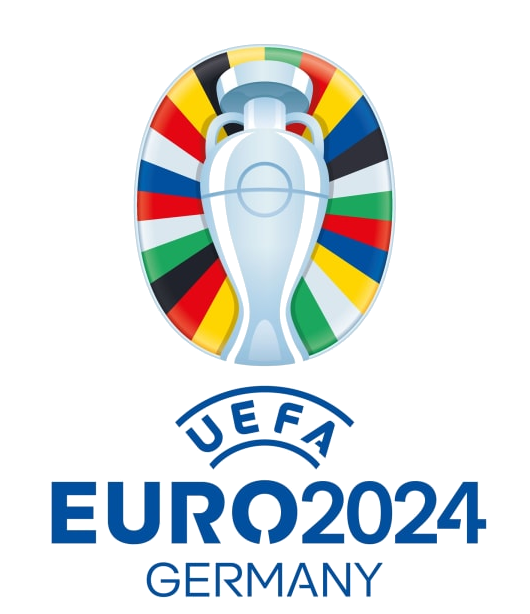 UEFA European Championship 2024
UEFA European Championship 2024
 Hansestadt
Hansestadt

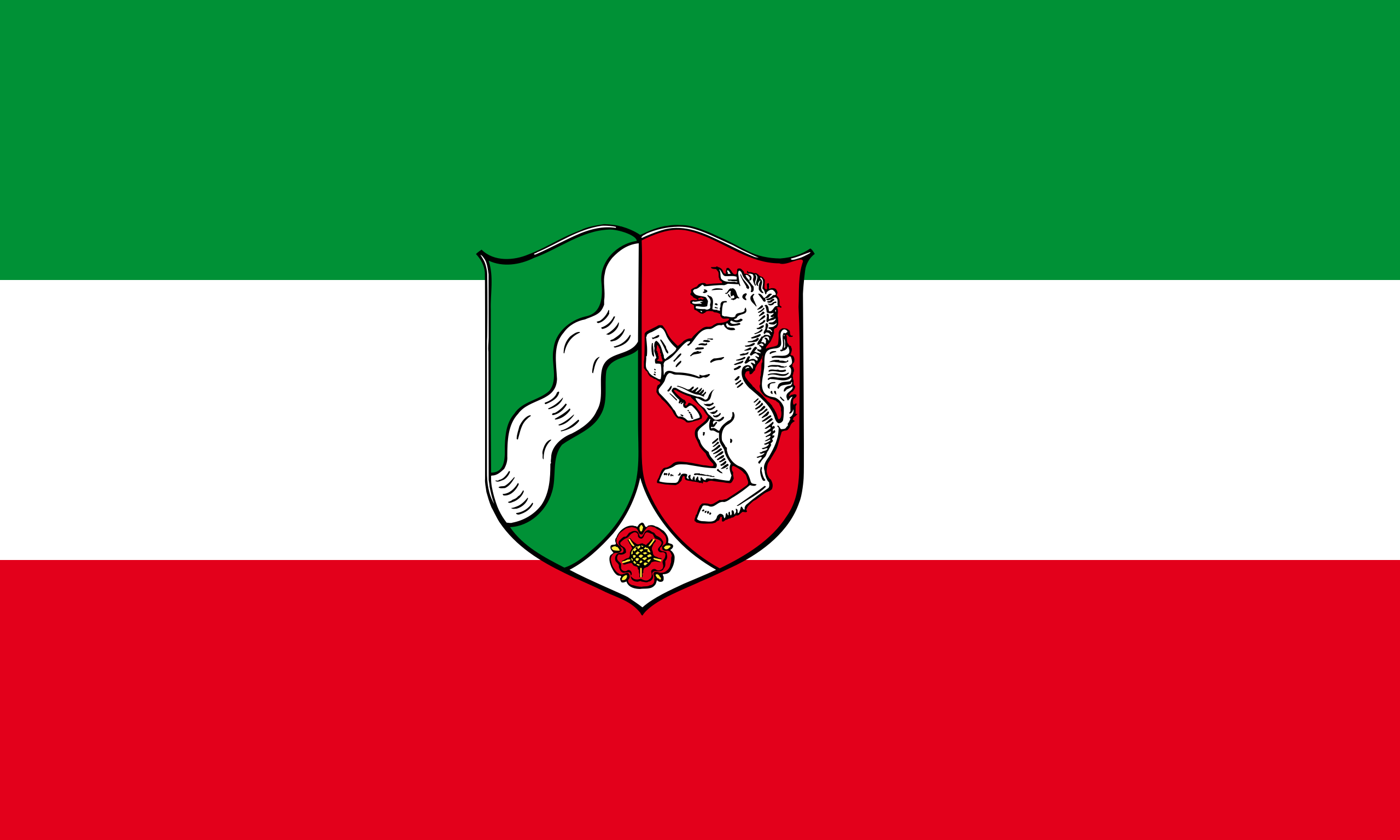 North Rhine-Westphalia
North Rhine-Westphalia

Dortmund  [ˈdɔʁtmʊnt] (Standardaussprache;[2][3] regional: [ˈdɔɐ̯tmʊnt]; westfälisch Düörpm, lateinisch: Tremonia) ist eine kreisfreie Großstadt in Nordrhein-Westfalen und mit rund 585.000 Einwohnern die achtgrößte Stadt Deutschlands. Nach eigener Aussage überschritt die Stadt bereits im Jahr 2016 erneut die 600.000er-Marke bei der Einwohnerzahl.[4] Dortmund ist Teil der Metropolregion Rhein-Ruhr mit rund elf Millionen Einwohnern, nach Fläche und Einwohnerzahl die größte Stadt im Ruhrgebiet und bildet das administrative, kommerzielle und kulturelle Zentrum Westfalens im Regierungsbezirk Arnsberg.[5][6]
[ˈdɔʁtmʊnt] (Standardaussprache;[2][3] regional: [ˈdɔɐ̯tmʊnt]; westfälisch Düörpm, lateinisch: Tremonia) ist eine kreisfreie Großstadt in Nordrhein-Westfalen und mit rund 585.000 Einwohnern die achtgrößte Stadt Deutschlands. Nach eigener Aussage überschritt die Stadt bereits im Jahr 2016 erneut die 600.000er-Marke bei der Einwohnerzahl.[4] Dortmund ist Teil der Metropolregion Rhein-Ruhr mit rund elf Millionen Einwohnern, nach Fläche und Einwohnerzahl die größte Stadt im Ruhrgebiet und bildet das administrative, kommerzielle und kulturelle Zentrum Westfalens im Regierungsbezirk Arnsberg.[5][6]
Die vermutlich auf eine karolingische Reichshofgründung zurückgehende, einst wichtige Reichs- und Hansestadt entlang des Hellwegs entwickelt sich heute von einer Industriemetropole zu einem bedeutenden Dienstleistungs- und Technologiestandort: Früher vor allem bekannt durch Stahl, Kohle und Bier, ist Dortmund heute nach langjährigem Strukturwandel ein Zentrum der Versicherungswirtschaft und des Einzelhandels. Mit etwa 53.500 Studierenden an sechs Hochschulen, darunter die Technische Universität Dortmund und 19 weiteren wissenschaftlichen Einrichtungen gehört Dortmund zu den zehn größten Hochschulstädten Deutschlands[7] und ist auch ein bedeutender Wissenschafts- und Hochtechnologie-Standort. Neuansiedlungen und Unternehmensgründungen entstehen deshalb bevorzugt in den Bereichen Logistik, Informations- und Mikrosystemtechnik. Die Westfalenmetropole verfügt über eine vielfältige Kulturszene mit zahlreiche Museen und Galerien wie dem Museum Ostwall, dem Museum für Kunst und Kulturgeschichte oder dem Deutschen Fußballmuseum. Daneben gibt es das Theater Dortmund mit Opernhaus, dem prämierten Schauspielhaus [8][9] und dem Kinder- und Jugendtheater sowie das Konzerthaus.[8][10]
Dortmund ist mit seinem Hauptbahnhof und Flughafen wichtiger Verkehrsknoten und Anziehungspunkt für das vor allem östlich der Stadt ländlich geprägte Umland und verfügt mit dem größten Kanalhafen Europas über einen Anschluss an wichtige Seehäfen an der Nordsee. Überregionale Bekanntheit erlangt Dortmund durch den Fußballverein Borussia Dortmund mit seiner Heimspielstätte Signal Iduna Park, dem früheren Westfalenstadion. Weitere Anziehungspunkte und Wahrzeichen der Stadt sind außerdem das Dortmunder U, der Westenhellweg als meist frequentierte Einkaufsstraße Deutschlands,[11] die Reinoldikirche, die Westfalenhalle, der Florianturm und der Phoenix-See. Das Stadtbild und die Skyline werden auch durch markante Hochhäuser geprägt.
多特蒙德位于莱茵河支流埃姆施尔河畔,面积280平方公里,人口60万。它是鲁尔区东部的经济文化中心。多特蒙德最早在公元855年前后见于记载。它 原是查理大帝的皇家要塞及莱茵河与威悉河之间的商路要站。10到13世纪,曾在这里举行过好几次帝国会议。1220年,多特蒙德成为帝国自由市,后来又加 入汉萨同盟。14世纪是它极为繁荣的黄金时代,据说英王爱德华三世为了向多特蒙德富商借债,竟以王冠作抵押,由此可见该市商业势力之一斑。但由于三十年战 争的惨烈破坏,多特蒙德一蹶不振,直到1815年并入普鲁士时,还只是一个4000人口的区区小镇。自19世纪30年代起,随着工业化的勃兴,多特蒙德以 地下有煤的优势,重振雄风,发展为煤钢基地、啤酒酿造中心和水陆交通枢纽。第二次世界大战中,它的旧城区几乎全部被摧毁,战后才得以重建。 古城新貌多特蒙德在战后修复了不少古建筑,同时又进行了现代化建设。在椭圆形的老城里,既有莱诺尔德、马利亚等4座中世纪大教堂雄峙,又有图书馆大楼和市 政大厦等现代化建筑高耸。新老建筑交相辉映,古城新貌,市景诱人。多特蒙德近一半土地由草坪、公园、森林和农业用地覆盖,到处是成行的树木,如茵地芳草。 在这里,曾两次举办“联邦花园展览”,故多特蒙德有“花园城市”之称。全市最美的公园要数南郊的威斯特法伦公园。它占地70公顷,内有220米高的电视塔 和拥有 1600个品种的玫瑰园。市郊南端的霍赫绥堡(Hohensyburg)也是风景佳丽的名胜。从鲁尔河谷拔地而起的青山上,留存着中古骑士城堡的遗址,供 人凭吊。山顶远眺,更有无限风光,使人留连忘返。 体育设施多特蒙德又是一个举世闻名的体育活动中心。第25届(1959)和第41届(1991)世界乒乓球锦标赛以及1974年的世界杯足球赛等许多国际 大赛都在这里举行。多特蒙德拥有威斯特法伦馆,容纳5万观众的威斯特法伦体育场,“红地”(Rote Erde)田径运动场和室内田径馆等近百处体育设施。威斯特法伦馆(West-falenhalle)建于1952年,高22米,为钢架与玻璃构成的圆形 建筑物。它可容纳2.2万名观众,是欧洲最大的体育馆之一。当年,容国团就是在这里力挫群雄,一举夺魁的。这座大型多功能体育馆也用于开会和演出。 啤酒酿造博物馆多特蒙德的啤酒酿造业源远流长,富于传统。早在1293年,国王阿道尔夫就授予多特蒙德酿造啤酒的特权。今天该市拥有6家大啤酒厂,年产量 达6亿多公升,足足可供全国每人饮用20多瓶。产量之高,令人惊奇,多特蒙德不愧是德国的啤酒之都。其产量在世界上也仅次于美国的密尔沃基,名列第二。感 兴趣的游人不妨在多特蒙德游览一下啤酒酿造博物馆(Brauereimuseum),还可以预约日期,参观一家啤酒厂。未到厂门,早就能闻到那浓郁的酒 香。车间里酿造用的大铜锅硕大无比,使围绕铜锅工作的人们看上去小得像蚂蚁。酿造师傅的工作岗位上都配有现代化调节装置,使人联想到发电厂的控制中心。灌 装啤酒之前的存贮 “罐”大得像小游泳池。厂内院落里,啤酒箱和铝制啤酒桶堆得像小山……啤酒厂的规模之大会给人留下深刻的印象。参观之后,主人照例会请参观者品尝品质优 越、味道可口的风味啤酒。开了眼界,饱了口福,游人一定会由衷地感到:啤酒之都-多特蒙德,的确名不虚传。
多特蒙德(德语:Dortmund),德国西部北莱茵-威斯特法伦州的重要城市,位于鲁尔区东部。截至2005年6月20日,多特蒙德人口有587,830人,是德国第七大城市。
鲁尔河从市内南面流过,小河埃姆斯查河流过多特蒙德市区。多特蒙德-埃姆斯河运河同样流入多特蒙德港,而多特蒙德港是德国最大的运河海港,连接多特蒙德与北海。
多特蒙德是北莱茵-威斯特法伦州的"绿色都市"。市内接近有一半地区是布满水道、林地、耕地和绿色地带和宽敞的公园例如威斯法伦公园和龙白克公园。根据历史所见,一百年前在市内范围大规模的采煤、炼炭、炼钢之后,现在的市容跟以前比较是一个颇大的对比。
多特蒙德是主场位于西格纳伊度纳公园威斯法伦体育场作赛,北莱茵-威斯特法伦的波鲁西亚多特蒙德足球俱乐部的根据地。西格纳伊度纳公园于1974年开幕,容量包含座席及立席为81,264人,是全德国最大的球场。球场过往已举办过1974年世界杯足球赛和2006年世界杯足球赛一些赛事。
ドルトムント(標準ドイツ語: Dortmund, ヴェストファーレン方言(ドイツ語版): Düörpm)は、ドイツ連邦共和国の都市。ノルトライン=ヴェストファーレン州に属する。人口はおよそ58万人。 かつての工業地帯として知られるルール地方の代表的な都市。交通の要衝で、鉄道の結節点であり、ドルトムント・エムス運河を通じて北海と航路がつながっている。近隣の都市としては、西にボーフムが隣接し、約50キロ北にミュンスター、95キロ東北にビーレフェルト、55キロ南西にデュッセルドルフが位置する。デュッセルドルフから特急ICEで40分程度。石炭と鉄鉱石を産出し、鉄鋼工業が栄えると共に、ミュンヘンと並ぶ世界有数のビール生産地であったが、産業の構造変化によって衰退し、現在はハイテク産業や第三次産業に力を入れている。
Dortmund ([ˈdɔɐ̯tmʊnt] ( listen); Low German: Düörpm: [ˈdyːœɐ̯pm̩]; Latin: Tremonia) is, with a population of 586,600 (2017), the third largest city of Germany's most populous federal state of North Rhine-Westphalia after Cologne and Düsseldorf, and Germany's eighth largest city. It is the largest city (by area and population) of the Ruhr, Germany's largest urban area with some 5.1 million (2011) inhabitants, as well as the largest city of Westphalia. On the Emscher and Ruhr rivers (tributaries of the Rhine), it lies in the Rhine-Ruhr Metropolitan Region and is considered the administrative, commercial and cultural centre of the eastern Ruhr.
listen); Low German: Düörpm: [ˈdyːœɐ̯pm̩]; Latin: Tremonia) is, with a population of 586,600 (2017), the third largest city of Germany's most populous federal state of North Rhine-Westphalia after Cologne and Düsseldorf, and Germany's eighth largest city. It is the largest city (by area and population) of the Ruhr, Germany's largest urban area with some 5.1 million (2011) inhabitants, as well as the largest city of Westphalia. On the Emscher and Ruhr rivers (tributaries of the Rhine), it lies in the Rhine-Ruhr Metropolitan Region and is considered the administrative, commercial and cultural centre of the eastern Ruhr.
Founded around 882,[2] Dortmund became an Imperial Free City. Throughout the 13th to 14th centuries, it was the "chief city" of the Rhine, Westphalia, the Netherlands Circle of the Hanseatic League.
During the Thirty Years' War, the city was destroyed and decreased in significance until the onset of industrialization. The city then became one of Germany's most important coal, steel and beer centres. Dortmund consequently was one of the most heavily bombed cities in Germany during World War II. The devastating bombing raids of 12 March 1945 destroyed 98% of buildings in the inner city center. These bombing raids, with more than 1,110 aircraft, hold the record to a single target in World War II.[3]
The region has adapted since the collapse of its century-long steel and coal industries and shifted to high-technology biomedical technology, micro systems technology and also services. In 2009, Dortmund was classified as a Node city in the Innovation Cities Index published by 2thinknow[4] and is the most sustainable and digital city in Germany.[5][6]
Dortmund is home to many cultural and educational institutions, including the Technical University of Dortmund and Dortmund University of Applied Sciences and Arts, International School of Management and other educational, cultural and administrative facilities with over 49,000 students, many museums, such as Museum Ostwall, Museum of Art and Cultural History, German Football Museum, as well as theatres and music venues like the Konzerthaus or the Opera House of Dortmund. The city is known as Westphalia's "green metropolis". Nearly half the municipal territory consists of waterways, woodland, agriculture and green spaces with spacious parks such as Westfalenpark and Rombergpark. This stands in a stark contrast with nearly a hundred years of extensive coal mining and steel milling in the past.
Dortmund is home to Ballspielverein Borussia 09 e.V. Dortmund, commonly known as Borussia Dortmund, a successful club in German football.[7][8]
Dortmund ˈdɔʁtmʊnt (API : /ˈdɔʁtmʊnt/) (latin : Tremonia, bas allemand : Düörpm, anc. franç. : Trémoigne), est une ville allemande située dans le Land de Rhénanie-du-Nord-Westphalie à l'extrémité est du bassin de la Ruhr. Sa population (586 181 habitants au 31 décembre 2016) en fait une des plus grandes villes de la région, la huitième plus grande ville d'Allemagne et la 34e de l'Union européenne.
Fondée vers 8821, Dortmund est devenue une ville libre impériale. Tout au long des XIIIe et XIVe siècles, c'était le "chef-lieu" du Rhin, de la Westphalie, du Cercle néerlandais de la Ligue hanséatique. Après la guerre de Trente Ans, la ville fut détruite et perdit de son importance jusqu'au début de l'industrialisation. La ville est alors devenue l'un des plus importants centres allemands du charbon, de l'acier et de la bière. Dortmund a donc été l'une des villes les plus bombardées d'Allemagne pendant la Seconde Guerre mondiale. Les bombardements dévastateurs du 12 mars 1945 détruisirent 98% des bâtiments du centre-ville. Ces raids de bombardement, avec plus de 1 110 avions, constituent un record pour une seule cible pendant la Seconde Guerre mondiale2.
La région s'est adaptée depuis l'effondrement de ses industries centenaires de l'acier et du charbon et s'est tournée vers la technologie biomédicale de haute technologie, la technologie des microsystèmes et les services. En 2009, Dortmund a été classée ville Noeud dans l'Index des Villes de l'Innovation publié par 2thinknow et est la ville la plus durable et numérique d'Allemagne3,4.
Dortmund est également connue comme la « métropole verte » de la Westphalie, près de la moitié du territoire municipal consistant en voie navigable, bois, espace agricole et espaces verts parmi lesquels de vastes parcs comme le Westfalenpark (de) ou le Rombergpark (de). Cette particularité contraste avec l'exploitation minière et la sidérurgie exercées dans la région pendant près d'un siècle. La ville se trouve sur la rivière Emscher, affluent du Rhin qui coule au sud de la ville. Le canal Dortmund-Ems relie à la Mer du Nord le port de Dortmund (de), qui est le plus grand port d'Europe situé sur un canal. Cette ville est également le siège du célèbre club de football Borussia Dortmund.
Dortmund ascolta[?·info] (in basso tedesco Düörpm) è una città extracircondariale di 585 813 abitanti della Renania Settentrionale-Vestfalia, in Germania. È il centro maggiore della regione della Ruhr, e il terzo (dopo Colonia e Düsseldorf) del Land.
Dortmund ( [ˈdɔɐ̯tmʊnt] (?·i); en bajo alemán: Düörpm; en latín: Tremonia, nombre hispánico tradicional) es una ciudad de Alemania localizada en el estado federado de Renania del Norte-Westfalia, está situada en la Región del Ruhr y es la octava más grande de Alemania, con una población de 601,402 habitantes (2018). Se encuentra en la región metropolitana del Rin-Ruhr y es considerado el centro administrativo, comercial y cultural del Ruhr oriental. El río Ruhr fluye al sur de la ciudad, y el pequeño río Emscher atraviesa el término municipal. El canal Dortmund-Ems también acaba en el puerto de Dortmund, que es el mayor puerto de canal europeo, y tiene enlaces de Dortmund hasta el mar del Norte. Dortmund se conoce como la "metrópoli verde" de Westfalia.
[ˈdɔɐ̯tmʊnt] (?·i); en bajo alemán: Düörpm; en latín: Tremonia, nombre hispánico tradicional) es una ciudad de Alemania localizada en el estado federado de Renania del Norte-Westfalia, está situada en la Región del Ruhr y es la octava más grande de Alemania, con una población de 601,402 habitantes (2018). Se encuentra en la región metropolitana del Rin-Ruhr y es considerado el centro administrativo, comercial y cultural del Ruhr oriental. El río Ruhr fluye al sur de la ciudad, y el pequeño río Emscher atraviesa el término municipal. El canal Dortmund-Ems también acaba en el puerto de Dortmund, que es el mayor puerto de canal europeo, y tiene enlaces de Dortmund hasta el mar del Norte. Dortmund se conoce como la "metrópoli verde" de Westfalia.
Fundada alrededor del año 882, Dortmund se convirtió en una Ciudad Libre Imperial. A lo largo de los siglos XIII y XIV fue la "ciudad principal" del Rin, Westfalia y el Círculo Holandés de la Liga Hanseática. Después de la Guerra de los Treinta Años, la ciudad fue destruida y su importancia disminuyó hasta el inicio de la industrialización. La ciudad se convirtió entonces en uno de los centros de producción de carbón, acero y cerveza más importantes de Alemania. Dortmund fue una de las ciudades más bombardeadas de Alemania durante la Segunda Guerra Mundial. Los devastadores bombardeos del 12 de marzo de 1945 destruyeron el 98% de los edificios del centro de la ciudad. Estos bombardeos, con más de 1.110 aviones, mantienen el récord de un solo objetivo en la Segunda Guerra Mundial.1
La región se ha adaptado desde el colapso de sus industrias siderúrgicas y carboníferas centenarias y ha pasado a la tecnología biomédica de alta tecnología, la tecnología de microsistemas y también los servicios. En 2009, Dortmund fue clasificada como ciudad Nodo en el Índice de Ciudades Innovadoras publicado por 2thinknow es la ciudad más sostenible y digital de Alemania. Hoy en día, Dortmund es el hogar de muchas instituciones culturales y educativas, incluyendo la Universidad Técnica de Dortmund y la Universidad de Ciencias Aplicadas y Artes de Dortmund, la Escuela Internacional de Administración y otras instalaciones educativas, culturales y administrativas con más de 49.000 estudiantes. 2 34
До́ртмунд (нем. Dortmund, н.-нем. Düörpm) — город земельного подчинения на западе Германии, в федеральной земле Северный Рейн-Вестфалия. Население 585 352[5]. Является крупнейшим городом-частью 5-миллионной конурбации-мегалополиса Рурской области и вторым по размеру городом в 10-миллионном конгломерате городов Рейнско-Рурского региона.

Oklahoma City ist die Hauptstadt des US-amerikanischen Bundesstaates Oklahoma und dessen wirtschaftliches und kulturelles Zentrum. Die Stadt ist County Seat des gleichnamigen Oklahoma County. Sie ist eine der größten Städte der Great Plains und liegt am North Canadian River im Zentrum des Bundesstaates Oklahoma. Das U.S. Census Bureau hat bei der Volkszählung 2020 eine Einwohnerzahl von 681.054[2] ermittelt. In der Metropolregion lebten 2016 circa 1,37 Millionen Menschen.
Von 1954 bis 1956 befand sich mit dem KWTV-Sendemast das höchste Bauwerk der Welt in Oklahoma City.
俄克拉荷马城(英语:Oklahoma City)是美国俄克拉荷马州的首府、第一大城市,俄克拉荷马县县治。2005年7月1日人口532,517。[9]俄克拉荷马市位于俄克拉荷马州的中部。面积621.2平方英里(1,609平方千米),其中水域面积14.2平方英里(37平方千米)。俄克拉荷马市建立在1889年。1907年俄克拉荷马州加入美国联邦,俄克拉荷马市代替了加斯里(Guthrie)成为俄克拉荷马州的首府,所以很多人把资本从加斯里移动去向俄克拉荷马市投资,而且在1928年发现了油田,所以俄克拉荷马市就开始兴旺起来。而现在拥有NBA球队俄克拉荷马城雷霆队。
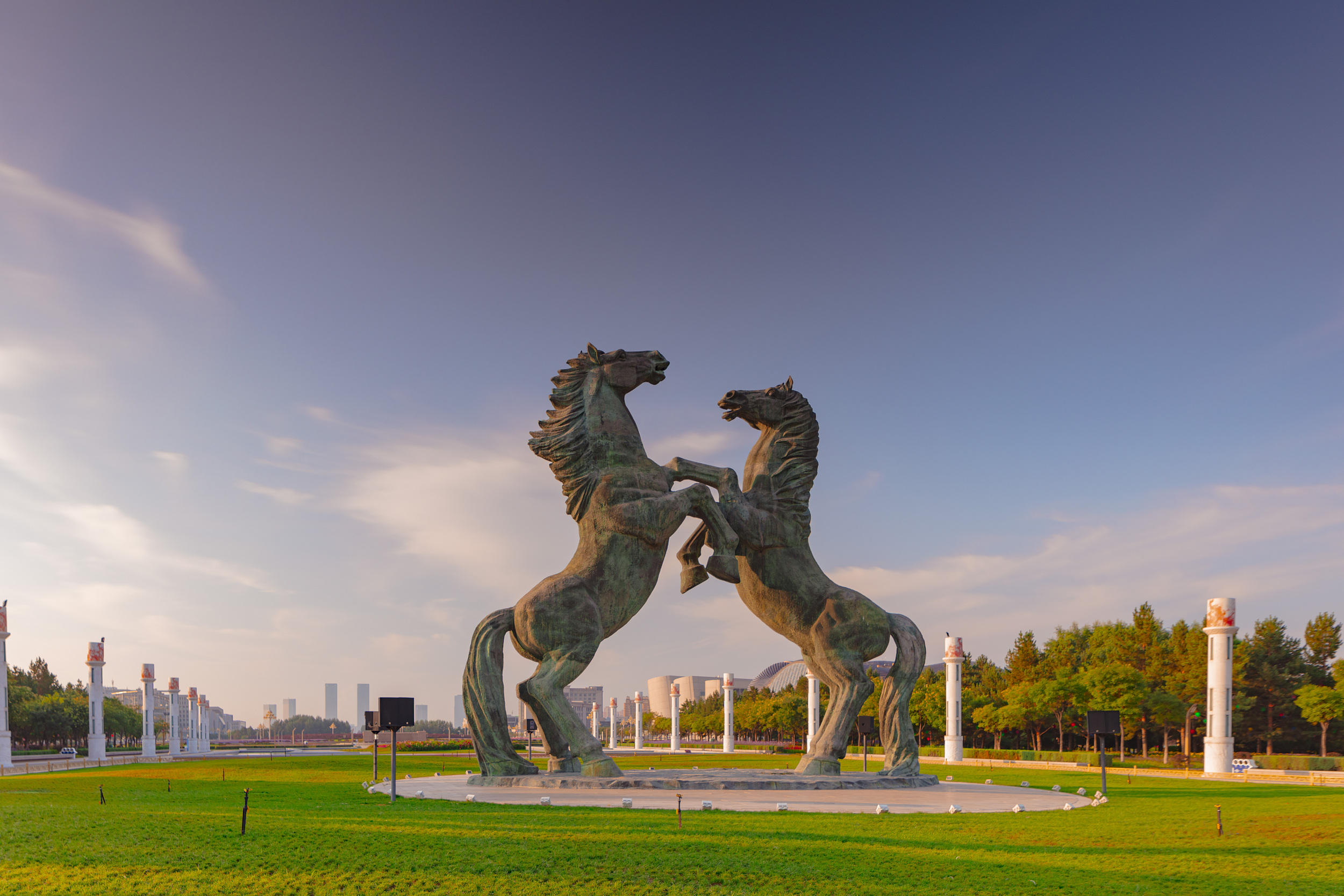



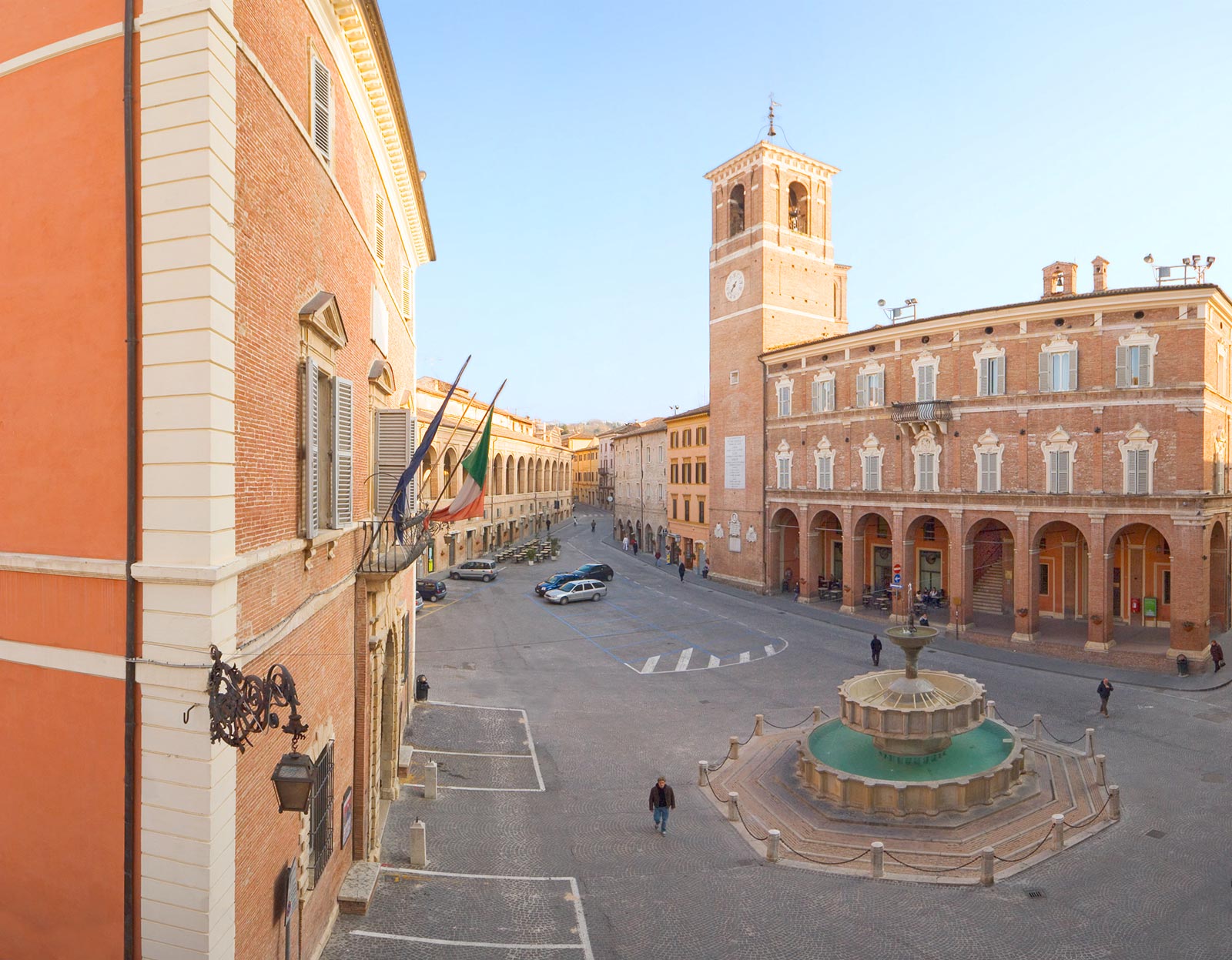
Fabriano ist eine Stadt der italienischen Provinz Ancona, Marken. Die 325 m. ü. NN gelegene Stadt hat 30.167 Einwohner (Stand 31. Dezember 2019) und eine Fläche von 269,61 km². Fabriano ist Sitz des Bischofs von Fabriano-Matelica.
Die Stadt ist Mitgliedsgemeinde der Comunità Montana dell'Esino Frasassi und des Parco Gola della Rossa e di Frasassi. Besonders zahlreich sind die Ortsteile (località e frazioni): Albacina, Argignano, Attiggio, Bassano, Bastia, Belvedere, Borgo Tufico, Ca’ Maiano, Cacciano, Campodiegoli, Campodonico, Cancelli, Cantia, Castelletta, Ciaramella, Coccore, Collamato, Collegiglioni, Collepaganello, Cortina San Venanzio, Cupo, Grotte, Marischio, Melano, Molinaccio, Montefiascone, Morentella, Moscano, Nebbiano, Paterno, Pecorile, Poggio San Romualdo, Precicchie, Rocchetta, Rucce, San Donato, San Giovanni, San Michele, Sant'Elia, Serradica, Trocchetti, Valgiubola, Vallemontagnana, Valleremita, Vallina, Varano, Viacce, Vigne. Der niedrigste Punkt des Gemeindegebiets liegt bei 164 m, der höchste bei 1410 m.
Die Nachbargemeinden sind Cerreto d’Esi, Costacciaro (PG), Esanatoglia (MC), Fiuminata (MC), Fossato di Vico (PG), Genga, Gualdo Tadino (PG), Matelica (MC), Nocera Umbra (PG), Poggio San Vicino (MC), Sassoferrato, Serra San Quirico und Sigillo (PG).



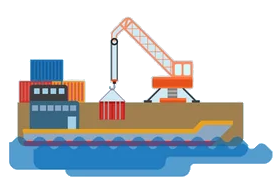 Important port
Important port
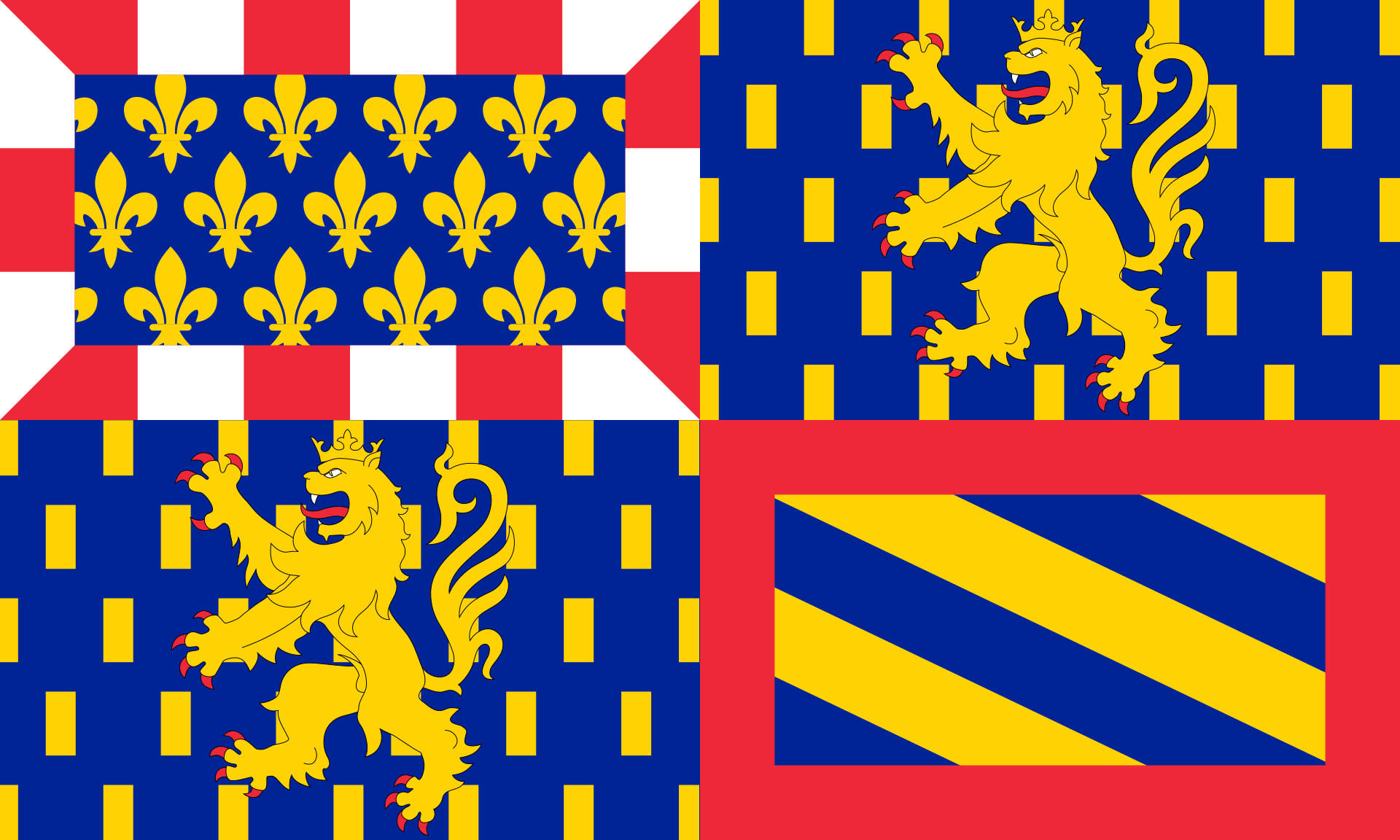 Bourgogne-Franche-Comté
Bourgogne-Franche-Comté
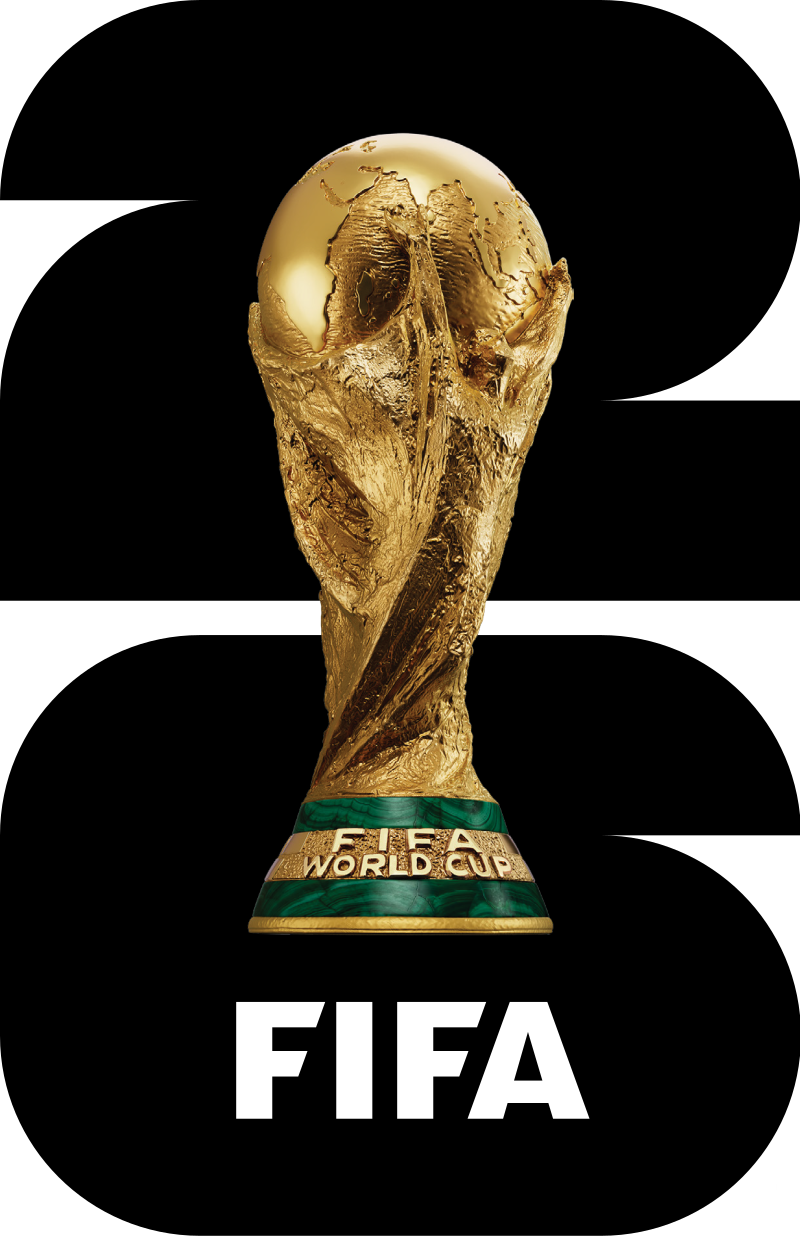 FIFA Fussball-Weltmeisterschaft 2026
FIFA Fussball-Weltmeisterschaft 2026
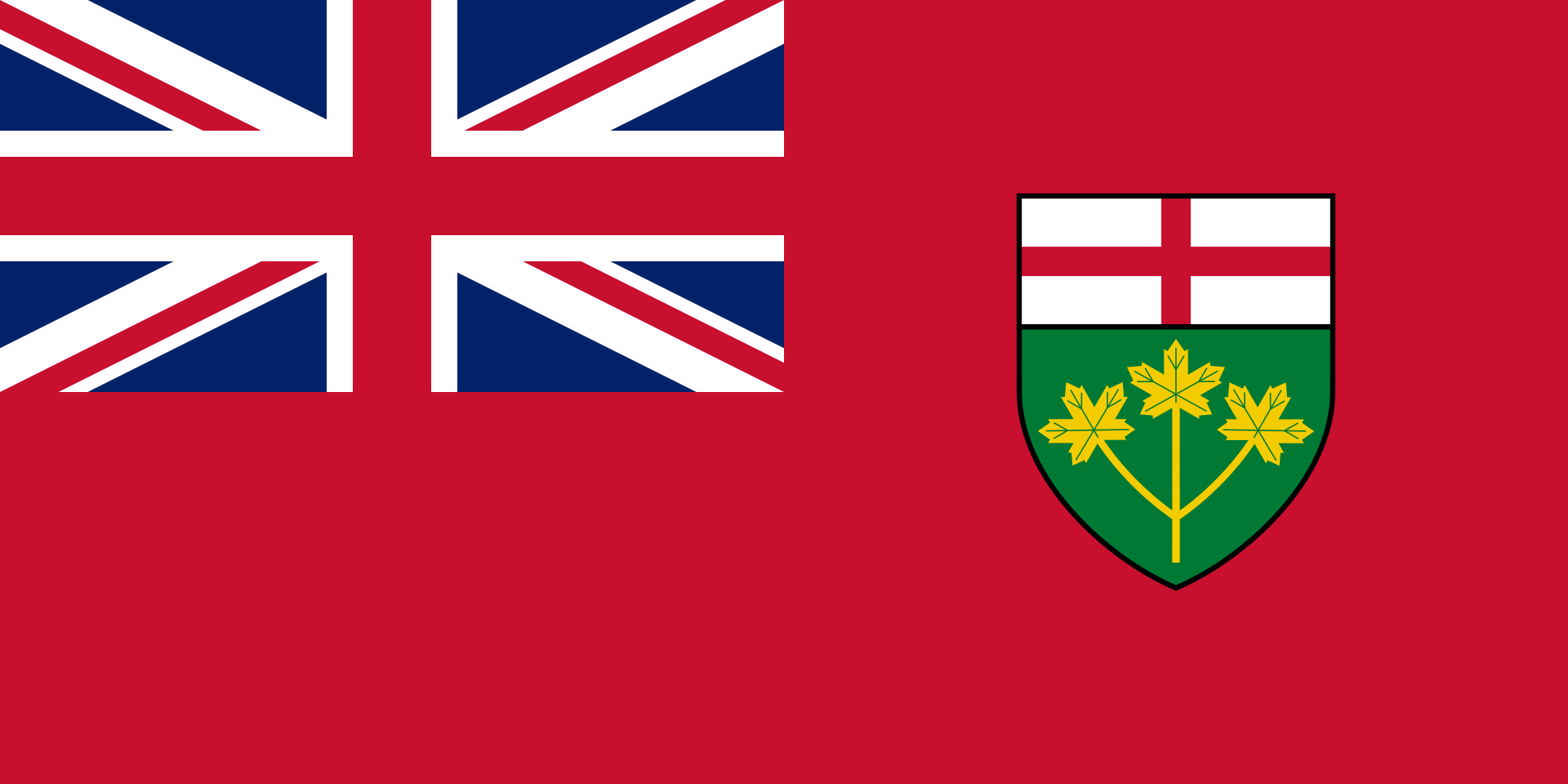 Ontario-ON
Ontario-ON
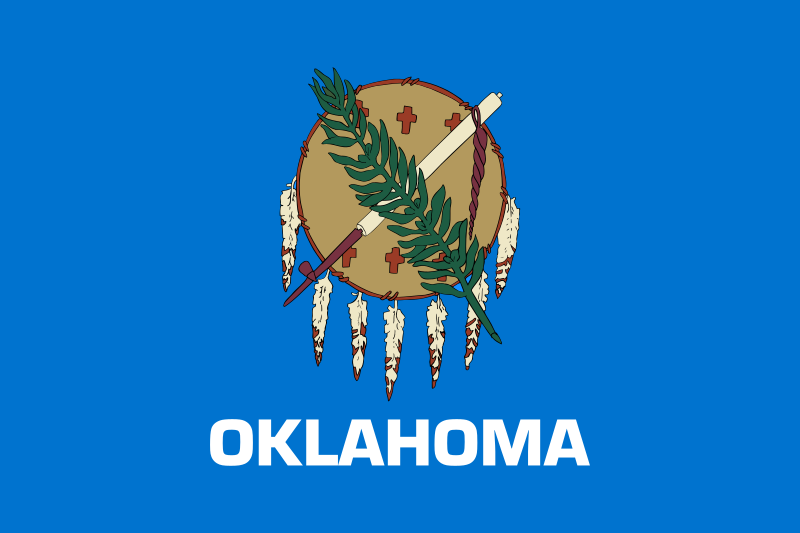 Oklahoma-OK
Oklahoma-OK
 Vacation and Travel
Vacation and Travel
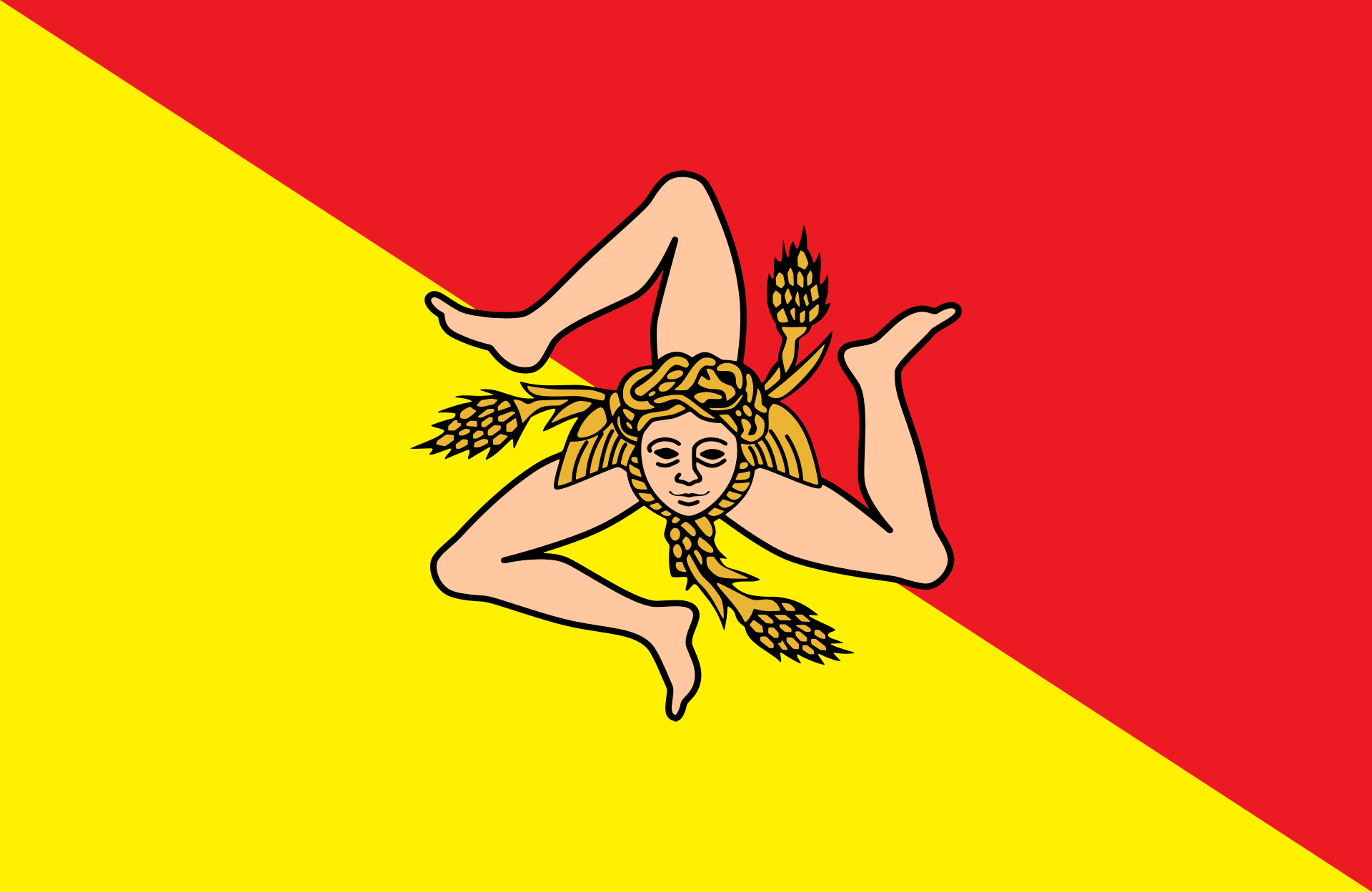 Sicilia
Sicilia
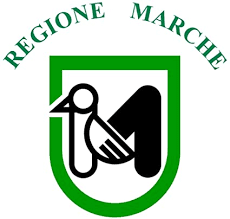 Marche
Marche
 Emilia-Romagna
Emilia-Romagna
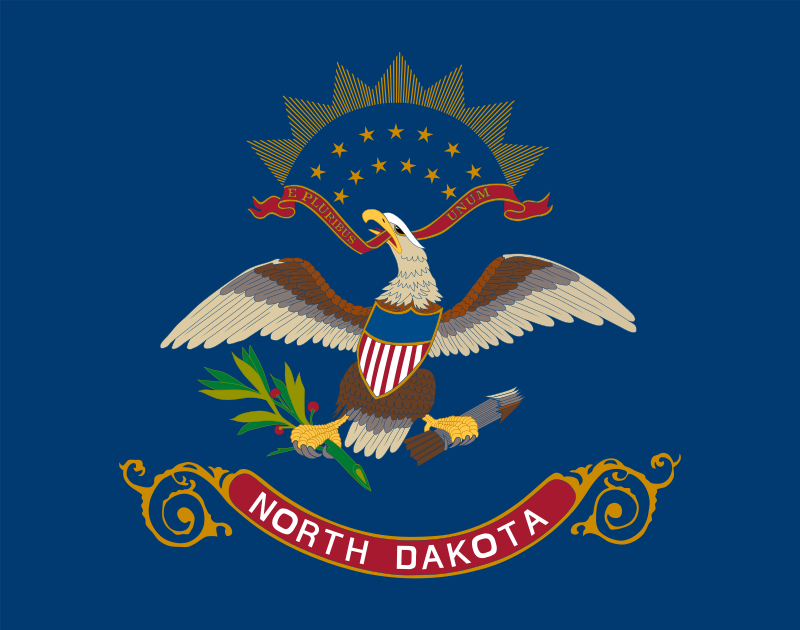 North Dakota-ND
North Dakota-ND